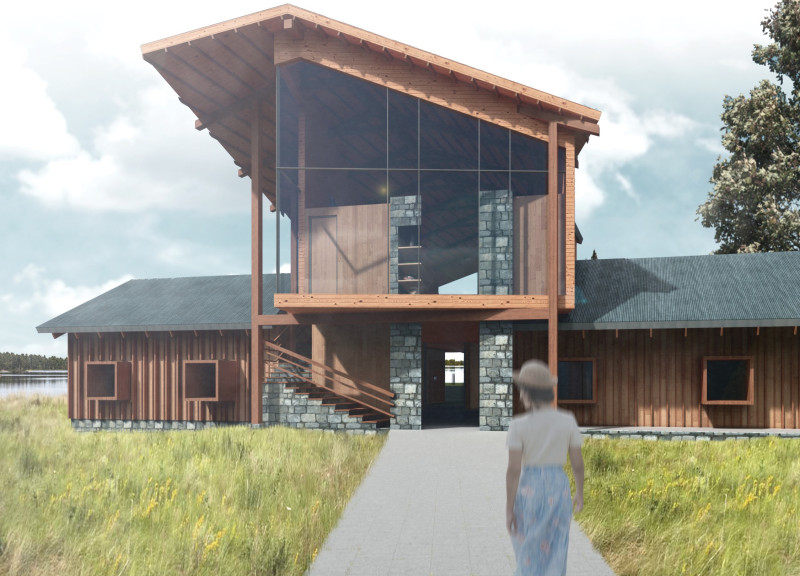5 key facts about this project
The Channel House is located beside a scenic lake, creating a distinctive setting for multi-family living. The design aims to shift away from traditional layouts that often confine living spaces. Instead, it utilizes a central breezeway to enhance both circulation and interaction among residents. This approach emphasizes a balance between private areas and communal spaces, allowing for a harmonious living environment.
Design Concept
The concept focuses on dividing spaces asymmetrically, which offers a fresh perspective on how family units can interact while enjoying their individual privacy. The structure stands two stories tall, with the second level spanning over the first floor studio, covering the breezeway below. This arrangement frames views of the lake, making water visible from key living areas. The design is well-aligned with the natural surroundings, ensuring that the architecture is informed by the landscape.
Spatial Organization
On the first floor, two families have their own designated areas. Family A has a private studio, while Family B uses a storage workshop. The breezeway acts as the main pathway, providing entry points for both families and direct access to the lake. This arrangement supports privacy while promoting social interaction. The layout encourages families to connect when they choose, reflecting a modern understanding of community living.
Materiality
Material choices play a crucial role in defining the character of the house. Timber is the main material throughout, creating a relationship with traditional Latvian architecture and grounding the structure in its cultural context. Heavy stone is used in the breezeway, lending stability to the overall design and ensuring that it is solidly anchored to the site. The materials come together to create a space that is both functional and reflective of the environment.
Large openings in the design provide views and allow natural light to fill the living spaces, reinforcing connections to the outdoors. Each detail contributes to a sense of calm and comfort, emphasizing the importance of balance in both private and shared areas.






















































